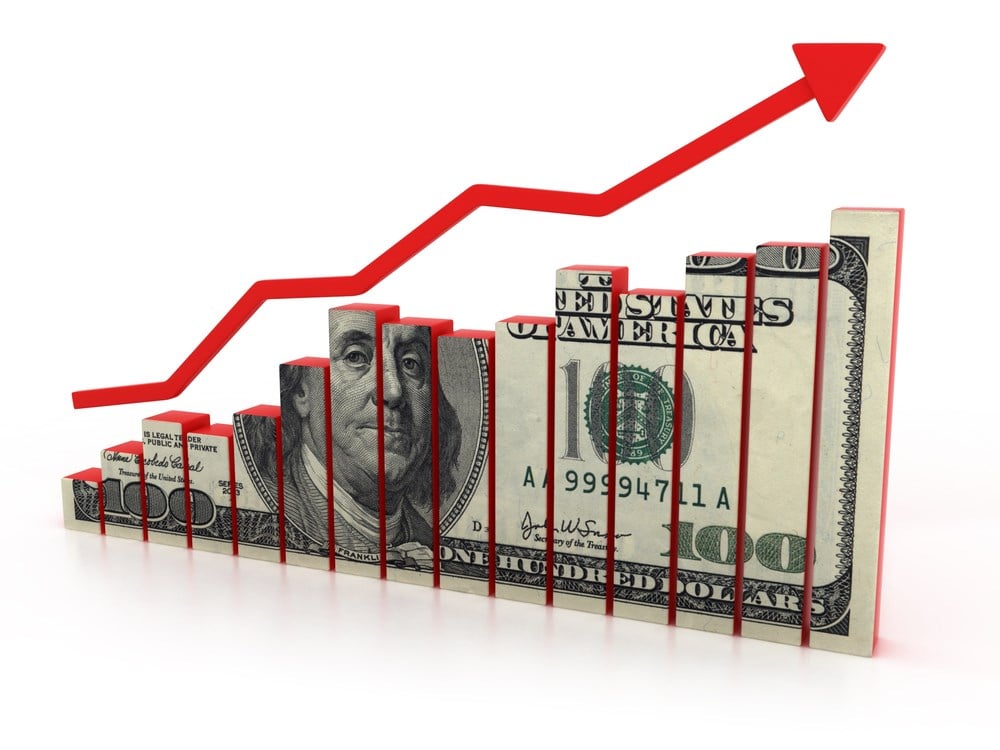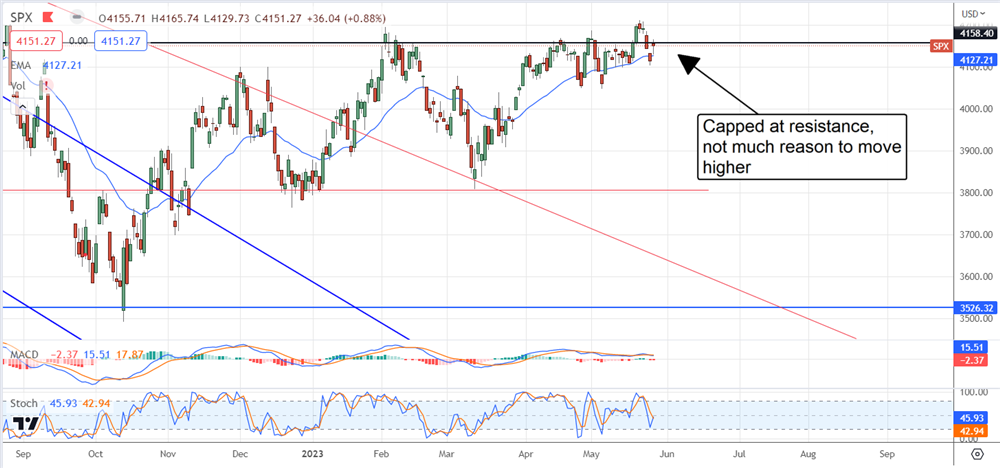Hot Inflation, What It Means For The Summer Rally The PCE Price Index is hotter than expected and may lead to another FOMC rate hike, increased economic pressure, and the hard-landing it's trying to avoid.
This story originally appeared on MarketBeat

The PCE price index came hotter than expected and will profoundly impact the market. The index accelerated at the core and headline levels and on a month-to-month and YOY basis which can lead to only 1 thing: higher interest rates. The FOMC indicated a pause was possible at the last meeting but not probable, and it will be data-driven as always. The way the data looks now, the FOMC should be expected to be very hawkish at its next meeting with a high probability of another 25 basis point interest rate hike.
Interest rates for treasuries felt an immediate impact as the odds of another interest rate hike were priced into the market. The CME's FedWatch Tool also saw an immediate impact as the odds of that hike rose double-digit percentage points to near 50/50. The next CPI report comes out the day after the next Fed meeting, so this is the last data they have to use. This means that rates will peak well above 5.0% and remain higher for longer (more so than expected), and inflation and rates are still hot. The takeaway is that a soft landing is becoming increasingly elusive as the FOMC's need to clamp down on economic activity grows.
Earnings: A Slowdown In Economic Activity Impacts Earnings
A slowdown in economic activity means a slowdown in earnings for the S&P 500 (NYSEARCA: SPY), as already seen in the data. This new PCE data implies that the downturn in earnings outlook will accelerate, which is a dead weight for the market. The blended rate for S&P 500 Q1 earnings reported by Factset is much better than the forecast at the start of the cycle but still negative, and the figures for Q2, Q3, and Q4 figures continue to trend lower. Given the outlook for interest rates, it is unlikely these trends will change, and they may accelerate.
The 1 ray of hope is that Q1 was better than expected and that future quarters will be better than expected versus the consensus figure at the start of the reporting cycle. The question is better than expected compared to what? With the figures trending lower, the best the market can expect is for the S&P 500 to move sideways over the next few quarters as it works through a rolling bear market. At worst, the FOMC will cause a recession, bringing lower targets into play for the market.
Mixed Signals From The Retail Sector
Results from the retail sector are sending mixed signals that have a sinister undertone. This is important because consumer spending is 70% of the economy-shift in habits have a big impact. Spending is holding relatively steady, but rising costs for staples are offsetting pullbacks in discretionary spending. Walmart (NYSE: WMT) led the group and even guided higher. Still, even it says consumers are shifting away from discretionary items and toward consumables and health products—basically, food and soap, which spells trouble for discretionary stocks.
The outlook for Consumer Discretionary Sector (NYSEARCA: XLY) belies the trouble but does not represent the sector well. The weighting of the XLY ETF has Amazon (NASDAQ: AMZN) and Tesla (NASDAQ: TSLA) at 40% of the net, and they are both supported by other trends. Amazon is a discretionary name because you can buy so much discretionary merchandise, but its business is more akin to Walmart than a true-discretionary name. Tesla is the leader in EVs and just made a ground-breaking deal with Ford; its business is not driven by discretionary trends so much as secular ones. Foot Locker (NYSE: FL) is a better example; it reported weak earnings and gave weak guidance driven by weak demand and increased promotional activity.
The S&P 500 Is Bumping Along The Ceiling
The S&P 500 has wanted to move higher for the last few weeks, but it is becoming apparent higher prices are unlikely. The market continues to beat its head against the 4,150 level, which has been an impenetrable barrier for over a year. Even if the market can increase from the current level, 4,300 will likely cap gains. The risk of a summer rally isn't that investors may miss out on it but that they may chase the market higher in hopes of a rally and create a bubble that later bursts and moves against them.










